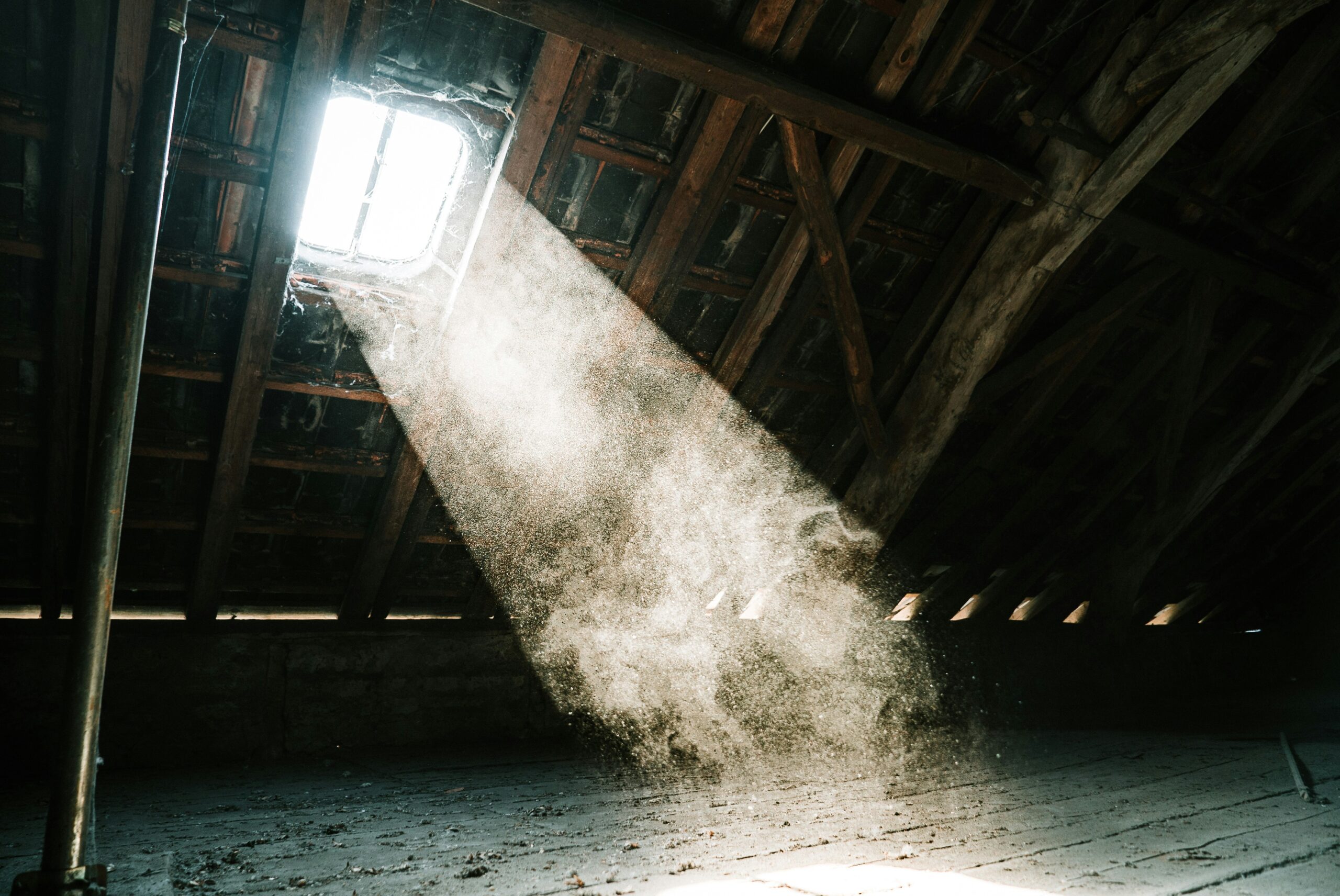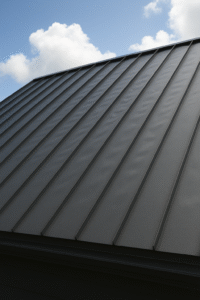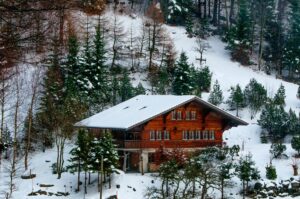Every attic and roof needs ventilation. Without steady air movement, hot air builds up, moist air lingers, insulation loses effectiveness, and the roof deck—the wood layer under your roofing materials—starts to suffer. Over time that means higher energy bills, damaged materials, a shorter roof lifespan, and sometimes even mold in the attic.
This holds true whether you have asphalt shingles or a metal roof. Asphalt shingles can curl and break down quickly in extreme heat, which can occur from no ventilation below. A standing seam metal roof won’t blister or break down like shingles, but without proper attic ventilation it can still trap moisture and create uneven spots or swelling in the wood roof deck.
The point is simple: fresh air must come in, warm air must exit. That balance keeps your attic space dry, your roof healthy, and your home comfortable.
By the end of this article, you’ll understand how roof ventilation for metal roofs works in practice and why systems like ridge vents and soffit vents are the go-to choice for long-term performance.
Quick Takeaways
- Every roof benefits from ventilation, no exceptions.
- Proper ventilation protects the roof deck, keeps fresh air moving, and prevents heat and moisture damage.
- Insulation should never block airflow: vent chutes (baffles) keep those air paths open. A ridge vent paired with soffit vents creates the best intake and exhaust setup for any attic space.
Why Ventilation Matters for Your Roof
Picture what’s happening in your attic: in summer, hot air rises and stays trapped if there’s no outlet. Moist air from bathrooms and daily living rises too, and without exhaust vents it condenses on wood and insulation. That combination warps roof decks, creates condensation, and shortens the life of your roofing system.
On a shingle roof, you might see curling and faster deterioration. On a metal roof, the panels hold up but the plywood beneath can swell and buckle. The big idea is balance—bring air in low, let warm air out high—so your attic space stays dry and stable.
The Best Way to Ventilate a Roof
So how is this handled in a modern home? We don’t cut big windows into attics anymore. Instead, we use a system of roof vents, intake vents, and exhaust vents that work together. This controlled ventilation system pulls cool, fresh air in near the eaves and lets hot air escape near the peak. At Rockland Builders, we specialize in new metal roofs, and we see every day how much difference this makes in protecting a new roof installation.
Ridge Cap Vents
A ridge vent is a long, narrow opening cut along the very top of the roof. It’s covered with a protective cap that blends into the roofline, so from the street it looks like a slim, clean strip. Its job is to let hot air naturally rise and escape out the peak.
When paired with soffit vents below, it creates continuous airflow from bottom to top. Ridge vents are effective, energy efficient, and less prone to leaks compared to other options like box vents or turbine vents.
Soffit Vents
Soffit vents are placed under the eaves, where the roof hangs over the walls of your home.
These are the intake vents: they bring in cool outside air that replaces the hot air escaping through the ridge vent. When working together, soffit and ridge vents create a complete cycle: fresh air in, hot air out. This is what roofers call a balanced system, and it’s considered the best setup for proper attic ventilation.
Gable Vents and Fans
Gable vents are openings installed high on the end walls of an attic. They can allow some air exchange, but airflow is limited and depends on the wind. Some homeowners also add powered exhaust vents or attic fans to push air out. These can work, but they bring extra energy costs and maintenance. For most homes, passive airflow with soffit and ridge vents is more reliable and longer-lasting.
Attic Ventilation Problems No One Talks About
Here are a few common issues we’ve seen:
- Roof decks that swell and curl when moist air lingers.
- Mold patches forming around bathroom exhaust vents routed under soffits.
- Ice dams in winter caused by attic heat melting snow unevenly across the roof.
These problems are especially common in older or existing homes where insulation or ventilation was not installed to modern building codes.
Insulation’s Role in Ventilation
Let’s look at an example.
One homeowner rolled insulation tightly against the underside of the roof deck. That mistake blocked the soffit intake vents, which burned out two attic fans and still left the space overheated. The solution was simple: install vent baffles (sometimes called vent chutes) to keep a clear path for airflow. Good attic ventilation always depends on keeping those channels open.
Common Mold & Moisture Issues During Roof Projects
We’ve seen roofing projects where bathroom exhaust vents pushed air right out under a soffit—and it got sucked right back inside. The result was dark, damp spots on the roof deck. Under metal roofs, moisture damage isn’t as visible right away, but it eventually shows up in the living space as uneven ceilings or musty smells.
Proper roof ventilation is preventative: it stops condensation before it starts.
Why Ventilation and Metal Roofs Go Hand in Hand
The right roof ventilation system—ridge vents at the peak, soffit vents at the eaves, and clear insulation paths—keeps your attic balanced and extends the life of your roof.
If you’ve recently had a roofing company out, had a metal roof installed or you’re not sure your attic is ventilating properly, Rockland Builders can help.
Call us for a free roof inspection and see how proper attic ventilation keeps your home energy efficient, dry, and comfortable.
FAQs
- Does a metal roof need ventilation? Yes, to prevent condensation and moisture accumulation.
- What’s the best venting setup for a metal roof? Intake from soffit vents paired with a ridge vent exhaust are great.
- How does attic insulation affect ventilation? It must allow airflow channels, not block them.
- Can poor ventilation cause mold? Yes, especially when warm air and moist air mix with no escape.
- What are the risks of gable vents vs. ridge vents? Gable vents provide limited movement compared to a continuous ridge vent system.
- How do you vent a metal roof without soffits? Options include gable vents, box vents, or turbine vents, though none are as effective as soffit‑and‑ridge systems.
- Do attic fans prevent mold? They can help, but a balanced passive ventilation system is more effective and energy efficient.





